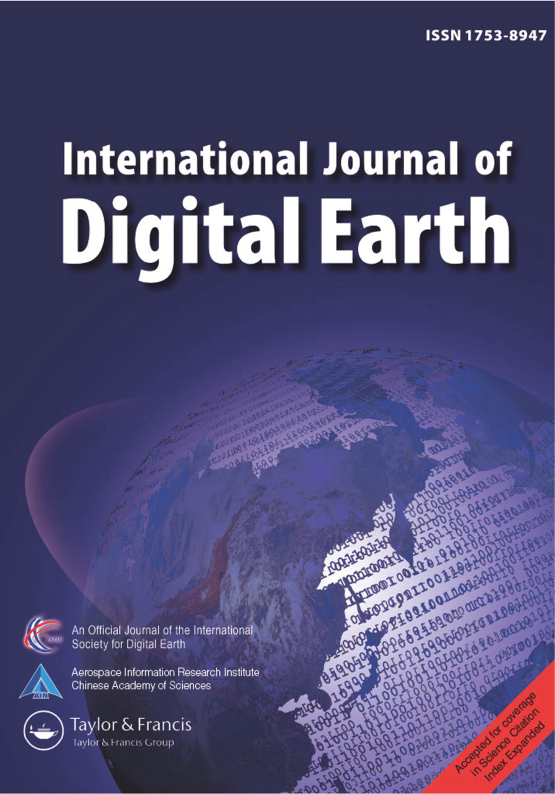Submit a Manuscript to the Journal
International Journal of Digital Earth
For an Article Collection on
Integrating Multi-Source Remote Sensing and Artificial Intelligence to Monitor Changes in Surface Water Resources
Manuscript deadline


Article collection guest advisor(s)
Professor Nan Xu,
Shenzhen University, China
Professor Yongwei Sheng,
University of California, Los Angeles, USA
Professor Yongze Song,
Curtin University, Australia
Professor Hui Lu,
Tsinghua University, China
Integrating Multi-Source Remote Sensing and Artificial Intelligence to Monitor Changes in Surface Water Resources
Inland water bodies, encompassing lakes, reservoirs, rivers, and wetlands, play a pivotal role in safeguarding global water security, maintaining ecosystem stability, and ensuring human well-being. These water bodies serve as vital life-support systems, facilitating essential ecological processes such as water purification, flood regulation, and habitat provision for diverse flora and fauna. However, escalating pressures from climate change, population growth, and unsustainable land-use practices threaten their integrity and availability. Addressing these challenges demands advanced tools to monitor and quantify water dynamics across spatiotemporal scales, from local basins to global systems. Remote sensing and artificial intelligence (AI) are revolutionizing our capacity to tackle this urgent need, offering scalable solutions for data-driven decision-making in water resource management, enabling more effective strategies for conservation, sustainable use, and protection of inland water bodies.
In recent years, the remarkable progress of remote sensing technologies, encompassing optical, thermal, radar, and lidar sensors, have revolutionized multidimensional monitoring of inland water systems. These sensors are capable of providing high-resolution, multi-temporal data on inland water systems, capturing critical parameters such as water extent, storage, quality, and hydrological fluxes. When integrated with AI and machine learning (ML) algorithms, these datasets enable automated extraction of actionable insights—from detecting ephemeral water bodies to predicting drought impacts. These capabilities are not only essential for enhancing our understanding of water-related processes but also for making informed decisions. Such innovations are pivotal for advancing sustainable water governance and supporting the UN Sustainable Development Goals (SDGs), with a particular focus on SDG 6, which aims to ensure clean water and sanitation for all. These efforts move us progressively closer to achieving a more sustainable future for water resource management.
In this Article Collection, we welcome original research, methodological innovations, and interdisciplinary case studies that demonstrate scalable solutions for water resource challenges. Submissions should emphasize technical rigor, geospatial relevance, and societal impact, aligning with the International Journal of Digital Earth’s mission to advance planetary-scale sustainability through remote sensing and AI/ML. Potential topics include, but are not limited to, the following:
- Automated Water Body Extraction: AI-driven segmentation of multispectral satellite imagery for precise delineation of lakes, rivers, and ephemeral water bodies
- Near-Real-Time Flood Monitoring: Integration of SAR/optical data and deep learning models for rapid flood mapping and inundation prediction
- AI-Powered Water Quality Prediction: Machine learning inversion of hyperspectral and multispectral data to estimate chlorophyll-a, turbidity, and nutrient concentrations
- Multi-Sensor Data Fusion for Reservoir Management: Synergizing optical, radar, and altimetry data with machine learning models to monitor reservoir storage dynamics
- Climate-Resilient Wetland Monitoring: AI-based models analyzing time-series Landsat/Sentinel data to assess wetland degradation under climate extremes
- UAV-AI Systems for River Morphology: Drone-based RGB/thermal imaging for high-resolution riverbank erosion detection
- Drought Early Warning Systems: Ensemble ML models integrating soil moisture (SMAP), vegetation indices (MODIS), and meteorological data for drought forecasting
- Aquatic Ecosystem Health Assessment: Explainable AI (XAI) frameworks linking satellite imagery to biodiversity indicators in freshwater ecosystems
- Urban Water Footprint Analysis: Fusion of nighttime lights (VIIRS), thermal imagery, and AI models to quantify urban water consumption patterns
- Smart Irrigation Optimization: ML algorithms integrating evapotranspiration (LST) and soil moisture data for precision agriculture water use
- Groundwater-Surface Water Interactions: Hybrid models combining GRACE satellite data, InSAR subsidence maps, and LSTM networks for aquifer recharge estimation
All manuscripts submitted to this Article Collection will undergo a full peer-review; the Guest Advisor(s) for this Collection will not be handling the manuscripts (unless they are an Editorial Board member).
Please review the journal scope and author submission instructions prior to submitting a manuscript.
The deadline for submitting manuscripts is 15 December 2025.
Please contact Alex Johnson at alex.johnson@tandf.co.uk with any queries and discount codes regarding this Article Collection.
Please be sure to select the appropriate Article Collection from the drop-down menu in the submission system.
The Guest Advisors of this Article Collection have declared no conflict of interest in line with Taylor & Francis' editorial policies.
Benefits of publishing open access within Taylor & Francis
Global marketing and publicity, ensuring your research reaches the people you want it to.
Article Collections bring together the latest research on hot topics from influential researchers across the globe.
Rigorous peer review for every open access article.
Rapid online publication allowing you to share your work quickly.
Submission Instructions
All manuscripts submitted to this Article Collection will undergo desk assessment and peer-review as part of our standard editorial process. Guest Advisors for this collection will not be involved in peer-reviewing manuscripts unless they are an existing member of the Editorial Board. Please review the journal Aims and Scope and author submission instructions prior to submitting a manuscript.

